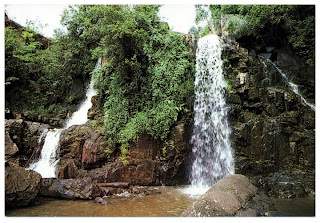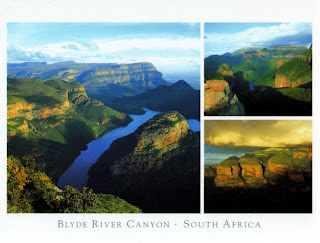Hey guys its World Post Day today!
It marks the anniversary of the Universal Postal Union's establishment and is annually held on October 9.
The union aimed to create and maintain a structure for the free flow of international mail around the world.
Thank goodness....all of us are postcrossing addicts...totally dependent on the postal services.
Postal services may issue special postage stamps to commemorate the ideals, history or achievements of the national postal service on or around World Post Day. These are prized by stamp collectors and philatelists (people who study stamps)
As we are in South Africa, we went to the local Post Office to find out what the South African Post Office was doing to celebrate this day, and lo and behold they have issued the Joburg 2010 International Stamp Show
“Joburg, a world class African city” is the slogan of this virbrant city with its fascinating history of gold mining and rapid industrial development.
There’s no doubt about it - the 2010 FIFA World Cup™ is the greatest event to happen in Joburg’s 120-year history, except perhaps the discovery of gold, which got the ball rolling in the first place. From a philatelic point of view, 2010 will also be an important year as the Joburg International Stamp Show, as well as the 23rd Asian International Stamp Exhibition will be held here.
To promote this event, the South African Post Office issued two miniature sheets and two commemorative covers.
Joburg, Jozi, eGoli, Place of Gold – whatever you call it, the vibrant City of Johannesburg is the place to be in 2010. This world class African city is an exciting place with a fascinating history and plenty to offer visitors. Dubbed the “economic enigine” of Southern Africa, Joburg has a population of more than three million, its economy produces 16% of South Africa’s gross domestic product and it is home to Africa’s largest stock exchange, the JSE Ltd. It is one of the very few major world cities not built on a river or harbour, although there are 12 river systems that run through it and 106 dams.
The South African Post Office and the Philatelic Federation of South Africa is proud to announce the hosting of the Joburg 2010 International Stamp Show and the 23rd Asian International Stamp Exhibition. These events will take place from 27 to 31 October at the Sandton Convention Centre. This venue is one of South Africa’s major world class centres for exhibitions, meetings and special events. Among several other international events, it has hosted the World Summit on Sustainable Development in 2002.
October has been dubbed the “most beautiful month” by one of South Africa’s poets as it starts the summer season. This is a time when spring rains transform the drab winter landscape to lush green, interspersed with colourful blooms. According to the South African Weather Service, the average daily minimum temperature for Johannesburg in October is 11°C (51,8°F) and the average daily maximum is 24°C (75,2°F). The average monthly rainfall is 72mm. Rain in Johannesburg mostly comes in the form of late afternoon thunderstorms that clear up quickly.
October does not fall within the peak holiday periods in South Africa and, in this instance, visitors will benefit from the upgraded infrastructure and other initiatives that had been put into place for the Soccer World Cup.
The Joburg 2010 International Stamp Show plans to have some 1 500 frames of competitive exhibits across all FIP classes. In addition, provision has been made for a Court of Honour, a South African Post Office archival exhibit and Invited exhibits. Frames will comply with the International Convention of 16 pages per frame
The first miniature sheet features a standard postage stamp bearing an image of the first stamp issued in South Africa inscribed with the words “South Africa”.

The original stamp bears the words “Union of South Africa” and was issued in 1910 when South Africa became a Union. In 2010, this will mark 100 years since the original stamp was first issued.
Both miniature sheets also bear the words “Joburg 2010 International Stamp Show, Sandton Convention Centre, Johannesburg, South Africa, 27 – 31 October 2010”.
The two miniature sheets, issued on 9 October 2009, will not only promote the show, but will also be a celebration of this historical year. They were design by the Thea Clemons, Philatelic Services’ graphic designer.
The second miniature sheet features an inernational small letter stamp bearing the logo of the Joburg 2010 International Stamp Show. The logo features the Nelson Mandela Bridge in Johannesburg as its main design element.
.





















































 Durban Time
Durban Time


